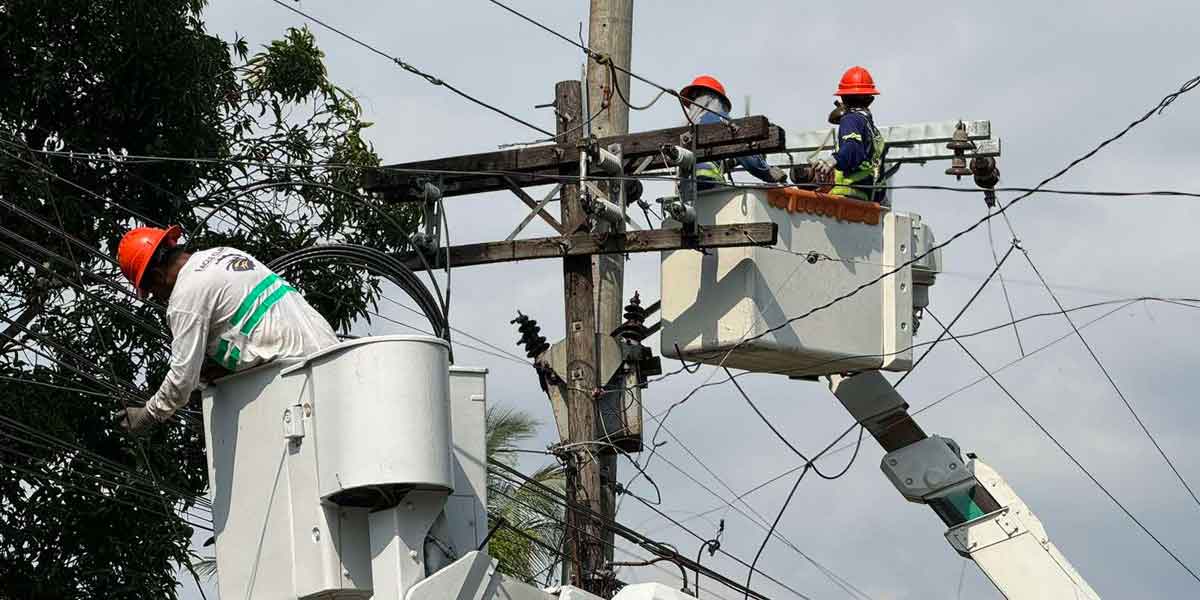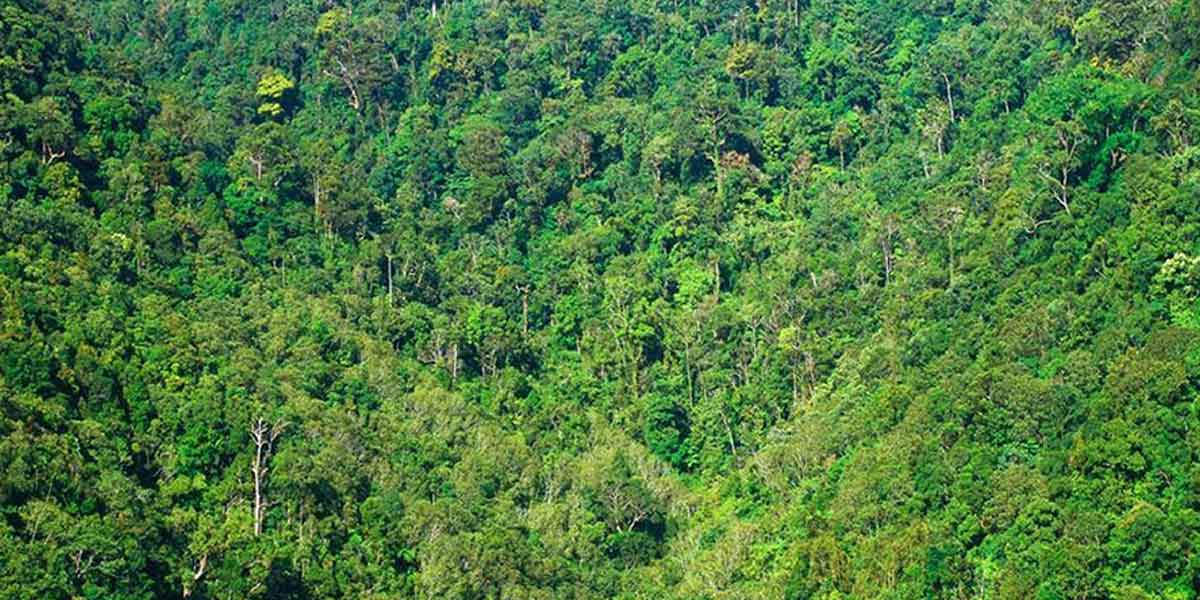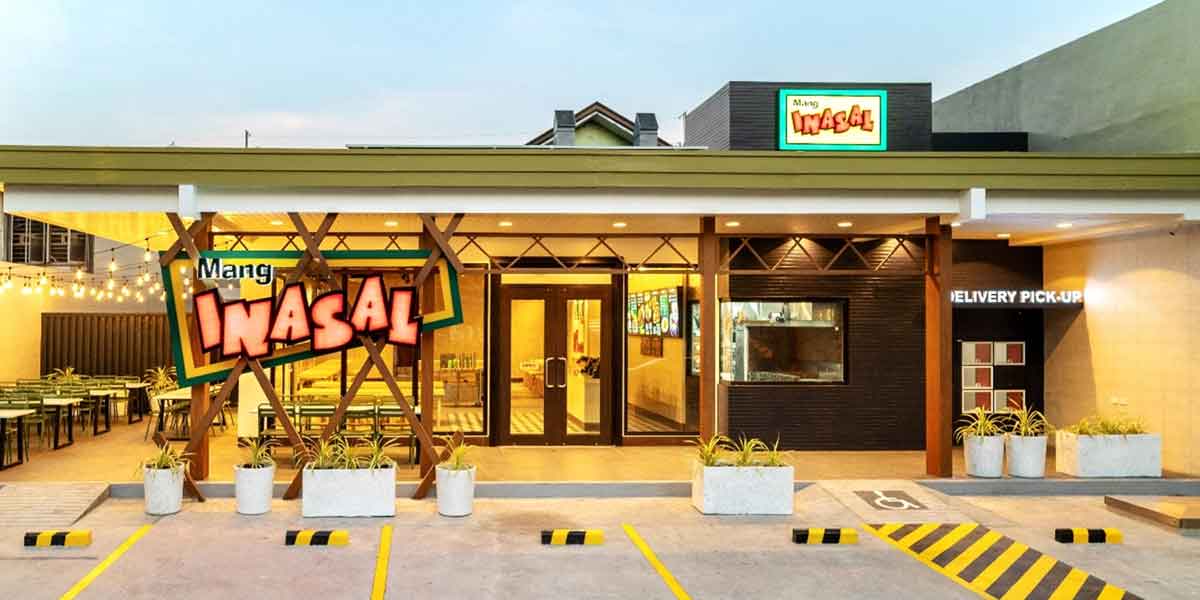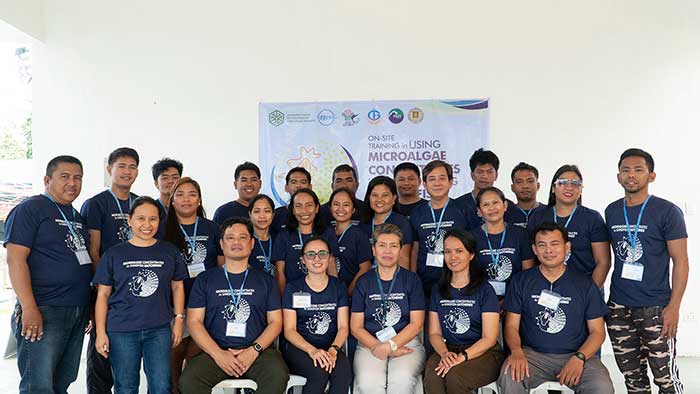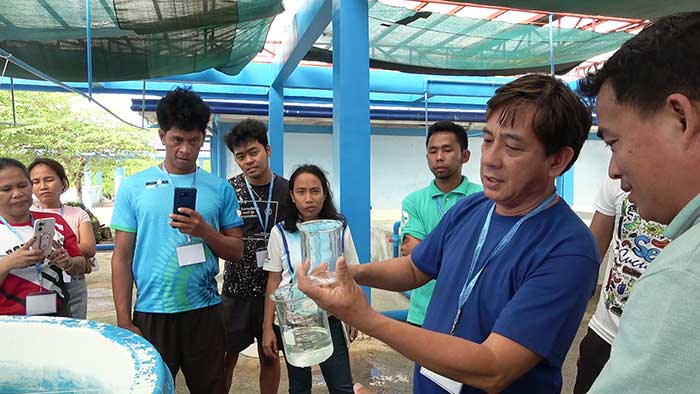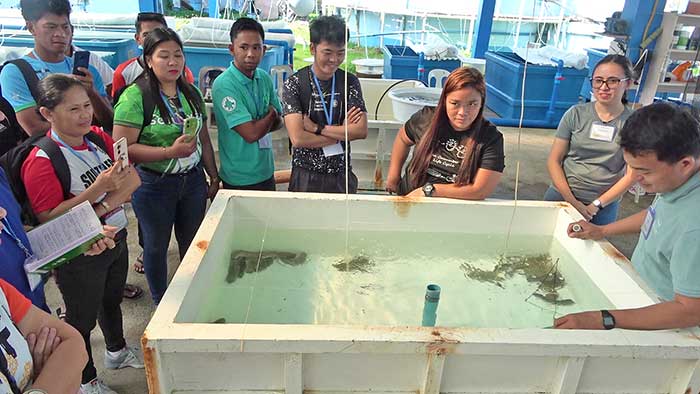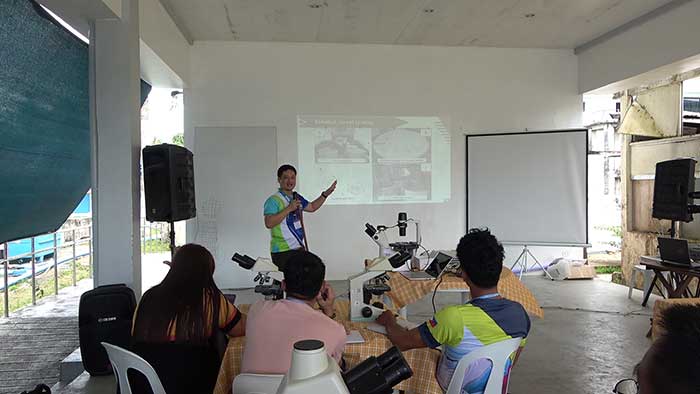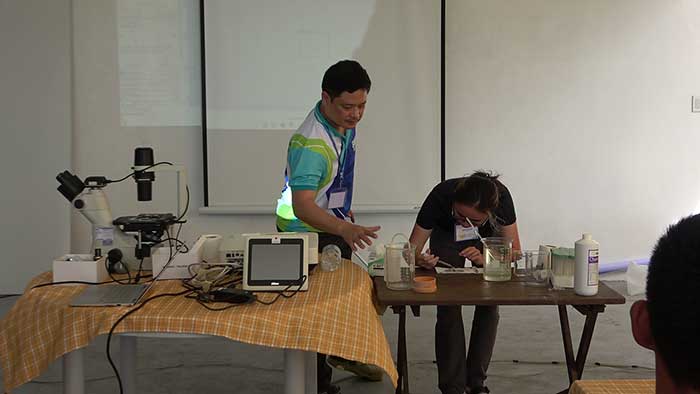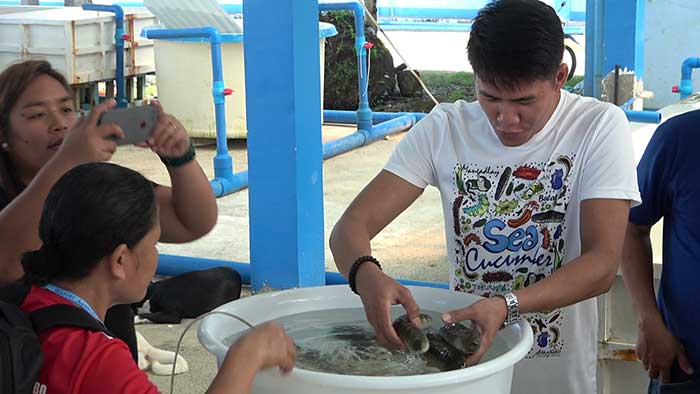GUIUAN, Eastern Samar—To overcome hurdles hindering the mainstreaming of sea cucumber aquaculture production in the Philippines, an international research organization conducted specialized training for technical staff nationwide on an innovative feeding strategy.
Sea cucumbers command high prices in international markets, with a kilogram of dried sea cucumber fetching over $1,000. However, rampant overharvesting of wild stocks led to their depletion, prompting aquaculturists to explore breeding technologies.
Providing a consistent supply of live microalgae as food for larval sea cucumber is the primary bottleneck in sustaining hatcheries around the country, which is why the Iloilo-based Southeast Asian Fisheries Development Center Aquaculture Department (SEAFDEC/AQD), with funding support from the Australian Center for International Agricultural Research (ACIAR) organized the training on Feb. 26 to 1 March 2024 to orient hatchery workers on the use of concentrated microalgae instead.
The event was conceptualized after ACIAR-funded studies conducted by SEAFDEC/AQD showed that commercial microalgae concentrate, or algal pastes, are viable supplements, if not total replacements, for live microalgae as food for sea cucumber larvae.
“A major bottleneck in sea cucumber hatchery production is the dependency on cultured live microalgae as the only larval feed,” shared Dr. Jon Altamirano, SEAFDEC/AQD scientist and one of the node leaders of the ACIAR Sandfish Project.
He added that one milliliter (ml) of cultured live microalgae can contain one million cells, but live cultures are sensitive to fluctuations in weather and water quality, which makes this food source unreliable.
On the other hand, concentrated microalgae are packed with up to 2 billion cells per milliliter and can be stored in ordinary refrigerators for months to be readily used for feeding at any time.
The demo training, held at the Bureau of Fisheries and Aquatic Resources (BFAR)-Guiuan Marine Fisheries Development Center, gathered 18 trainees who were equipped with practical skills to use algal pastes in growing sea cucumber larvae.
Dr. Altamirano, together with his research assistant Mr. Jesus Rodriguez, delivered lectures and led practical sessions that provided participants with hands-on experience in sea cucumber hatchery operations, focusing on the sandfish species (Holothuria scabra), which is one of the most threatened tropical sea cucumbers.
“Since the technology is already there, the Philippines should consider tapping into the economic potential of sea cucumber aquaculture, which, by the way, also has implications for ecological restoration,” said SEAFDEC/AQD Chief Dan Baliao.
The pilot dissemination activity was co-organized by BFAR-Region 8 and the Guiuan Development Foundation Inc. (GDFI) and attended by technicians from various BFAR and LGU hatcheries around Leyte and Samar, as well as from ACIAR project partners through the University of the Philippines-Marine Science Institute (UP-MSI), and the Mindanao State University Naawan (MSUN).

